External Influences on U.S. Undergraduate Mathematics Curricula: 1950-2000
Abstract
Many of the most important curricular changes in undergraduate mathematics in the second half of the 20th century appear to have been influenced by matters outside mathematics. In many cases these were circumstances in other academic disciplines, but a variety of other external circumstances have been involved as well. We survey a selection of important changes and the external forces that contributed to these changes. There is much more to the history of undergraduate mathematics during 1950-2000 we do not address, but the axis onto which we are projecting is an important one, and not unrelated to current events.
Introduction
In the era from 1950 to 2000 undergraduate teaching of mathematics in the United States was often responsive to external circumstances. This is an interesting phenomenon for a discipline that sometimes claims it has often benefitted the outside world most by following its own internal logic and aesthetics. As will be seen below, the proposals and changes in curricula that demonstrate this recent openness to the external environment are among the most important curricular changes that have occurred during the 1950-2000 era.
This paper is nowhere near a complete history of undergraduate mathematics teaching in the era under consideration – rather, it is a projection onto one important axis. For one thing, we do not consider internal influences impinging on the individual curricular issues considered. (Not, of course, because they were insignificant. We make no claims about their significance relative to the external influences.) Furthermore, we concentrate on impersonal forces, saying only a little about the talented and hard-working leaders who guided our community through these eventful years. Finally, by focusing entirely on curriculum, we ignore many other factors that have shaped our community, our activities and our students: faculty demographics and working conditions; the role of the Advanced Placement program for high school students (as described by David Bressoud’s numerous columns on calculus and the Advanced Placement program in 2010 at [6]); the role of organizations such as the Mathematical Association of America (MAA); the role of journals serving the community; activities related to employment and development of young faculty (the employment register, Project NExT); and so on.
A final disclaimer concerns bias and memory. Having lived through much of this era, we started with a tendency to think that we already understood what happened and why and whether it was a good thing. However, by putting our preferences aside and subjecting our opinions to evidence, we have often surprised ourselves. We hope our work will, likewise, lead some readers to a deeper understanding of our profession. Of course, in historical research, one can never declare that all the evidence is in and, in this spirit, we invite correspondence from readers.
Context
Our work is only a part of what could be a wider investigation in the history of mathematics. It should be supplemented by a similar investigation of teaching in the first half of the 20th century. Would such investigation suggest that high sensitivity to the environment surrounding mathematics instruction in colleges is a timeless feature of American mathematics, or were the years from 1950 to 2000 unusual? Another aspect of the wider problem would compare the impulses expressed in college teaching to those expressed in research. It has been argued by Jeremy Gray [18], that mathematical research underwent a transformation in the decades around 1900 toward modernism, a point of view marked by coolness toward applications and toward the world outside mathematics generally. Gray’s investigation did not reach into the second half of the 20th century. When the multiple strands of research in that second half-century are examined, what balance between modernist and countermodern impulses will we find? And will it appear that there is some linkage between teaching and research in these matters?
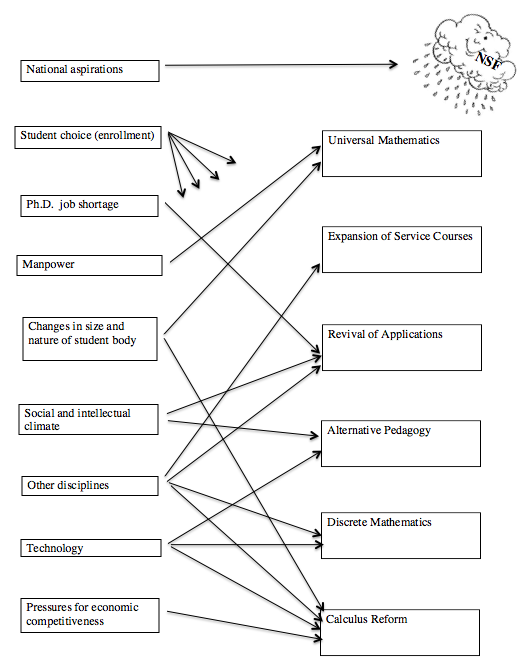
Figure 1. Schematic overview of the present article, "External Influences on U.S. Undergraduate Mathematics Curricula: 1950-2000." External influences are shown at left and new components and characteristics of the undergraduate mathematics curriculum at right.
Overview
Figure 1 is a schematic view of this paper. Our judgment is that all but one of the curricular thrusts in the right hand side of Figure 1 were of considerable importance in what went on in classrooms by the end of the 20th century. The exception is Universal Mathematics, a proposal that was unsuccessful, despite having been devised or supported by some of the most accomplished leaders of our community at the time. We include it because of its eminent pedigree and because it reveals dynamics of the community at that time and how these dynamics differed from more recent ones because of external influences.
The many short arrows leading from Student choice (enrollment) in Figure 1 call for comment. It seems axiomatic that anytime one tries to improve a curriculum one hopes it will draw in more students. But it is surprisingly rare to find explicit comments about this motivation in print – thus the arrows are short and a bit vague about their destinations.
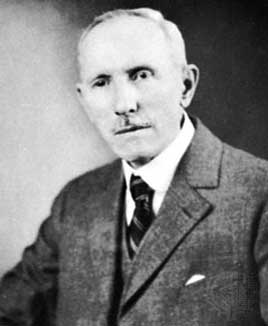 |
|
Florian Cajori (1859-1930) was a mathematics historian and educator who surveyed undergraduate mathematics curricula in the U.S. for his 1890 book, The teaching and history of mathematics in the United States. The Cajori Two Project, led by the author of this article, has carried his work into the 20th century. Cajori also served as president of the MAA during 1917. (Photo source: Convergence Portrait Gallery) |
There are some curricular changes that do not appear on the right of Figure 1 because they do not seem to have been propelled by external influences to any significant degree. For example, we do not discuss the modernization of the curriculum through the introduction of Modern Algebra, Linear Algebra, and more abstract and rigorous analysis. There are schools where this started before 1950, as we can see from the Cajori Two Project, a survey of undergraduate mathematics courses in the U.S. in the 20th century [40], but most of the change took place in the 1950s and 1960s. This far-reaching change seems to us to have been motivated largely from mathematical research and by the desire to better prepare students for graduate studies in mathematics. Research in modern and linear algebra and modern forms of analysis had been flourishing in the late 19th and early 20th centuries and the gap between undergraduate and graduate studies in these areas had widened.
Impersonal forces propelling proposals for change are sometimes broad, encouraging the general process of change, and sometimes particular, encouraging just one or a few proposals for change. Foundation money, especially from the National Science Foundation (NSF), was undoubtedly a broad force for change [47], symbolized by the friendly cloud in Figure 1. The NSF was founded in 1950 with a very broadly stated mission: "To promote the progress of science; to advance the national health, prosperity, and welfare; and to secure the national defense" [46]. Its budget for Education and Human Resources, of which support for curricular innovation is a part, rose from $0 in fiscal year 1951 to $727.6 million in 2000.
This growth in federal funding for science, mathematics and engineering had a large effect on mathematics education. As an example, starting in 1976, it became possible for a non-profit mathematics curriculum development organization, the Undergraduate Mathematics Applications Project (UMAP) and, later in 1980, its successor the Consortium for Mathematics and its Applications Project (COMAP), under the direction of Solomon (Sol) Garfunkel, to sustain itself in large part through its work on NSF grants. COMAP’s activities would eventually involve a wide variety of undergraduate mathematics courses, especially the popular lower division courses. COMAP had an especially large impact on re-introducing applications to the curriculum.
For another glimpse of how the growth of external funding has altered our professional world, we turn to a brief description of an early proposal for change so that we may examine how starkly it differed from a modern curricular thrust such as calculus reform.
External Influences on U.S. Undergraduate Mathematics Curricula: 1950-2000 - Introduction - Context - Overview
Abstract
Many of the most important curricular changes in undergraduate mathematics in the second half of the 20th century appear to have been influenced by matters outside mathematics. In many cases these were circumstances in other academic disciplines, but a variety of other external circumstances have been involved as well. We survey a selection of important changes and the external forces that contributed to these changes. There is much more to the history of undergraduate mathematics during 1950-2000 we do not address, but the axis onto which we are projecting is an important one, and not unrelated to current events.
Introduction
In the era from 1950 to 2000 undergraduate teaching of mathematics in the United States was often responsive to external circumstances. This is an interesting phenomenon for a discipline that sometimes claims it has often benefitted the outside world most by following its own internal logic and aesthetics. As will be seen below, the proposals and changes in curricula that demonstrate this recent openness to the external environment are among the most important curricular changes that have occurred during the 1950-2000 era.
This paper is nowhere near a complete history of undergraduate mathematics teaching in the era under consideration – rather, it is a projection onto one important axis. For one thing, we do not consider internal influences impinging on the individual curricular issues considered. (Not, of course, because they were insignificant. We make no claims about their significance relative to the external influences.) Furthermore, we concentrate on impersonal forces, saying only a little about the talented and hard-working leaders who guided our community through these eventful years. Finally, by focusing entirely on curriculum, we ignore many other factors that have shaped our community, our activities and our students: faculty demographics and working conditions; the role of the Advanced Placement program for high school students (as described by David Bressoud’s numerous columns on calculus and the Advanced Placement program in 2010 at [6]); the role of organizations such as the Mathematical Association of America (MAA); the role of journals serving the community; activities related to employment and development of young faculty (the employment register, Project NExT); and so on.
A final disclaimer concerns bias and memory. Having lived through much of this era, we started with a tendency to think that we already understood what happened and why and whether it was a good thing. However, by putting our preferences aside and subjecting our opinions to evidence, we have often surprised ourselves. We hope our work will, likewise, lead some readers to a deeper understanding of our profession. Of course, in historical research, one can never declare that all the evidence is in and, in this spirit, we invite correspondence from readers.
Context
Our work is only a part of what could be a wider investigation in the history of mathematics. It should be supplemented by a similar investigation of teaching in the first half of the 20th century. Would such investigation suggest that high sensitivity to the environment surrounding mathematics instruction in colleges is a timeless feature of American mathematics, or were the years from 1950 to 2000 unusual? Another aspect of the wider problem would compare the impulses expressed in college teaching to those expressed in research. It has been argued by Jeremy Gray [18], that mathematical research underwent a transformation in the decades around 1900 toward modernism, a point of view marked by coolness toward applications and toward the world outside mathematics generally. Gray’s investigation did not reach into the second half of the 20th century. When the multiple strands of research in that second half-century are examined, what balance between modernist and countermodern impulses will we find? And will it appear that there is some linkage between teaching and research in these matters?

Figure 1. Schematic overview of the present article, "External Influences on U.S. Undergraduate Mathematics Curricula: 1950-2000." External influences are shown at left and new components and characteristics of the undergraduate mathematics curriculum at right.
Overview
Figure 1 is a schematic view of this paper. Our judgment is that all but one of the curricular thrusts in the right hand side of Figure 1 were of considerable importance in what went on in classrooms by the end of the 20th century. The exception is Universal Mathematics, a proposal that was unsuccessful, despite having been devised or supported by some of the most accomplished leaders of our community at the time. We include it because of its eminent pedigree and because it reveals dynamics of the community at that time and how these dynamics differed from more recent ones because of external influences.
The many short arrows leading from Student choice (enrollment) in Figure 1 call for comment. It seems axiomatic that anytime one tries to improve a curriculum one hopes it will draw in more students. But it is surprisingly rare to find explicit comments about this motivation in print – thus the arrows are short and a bit vague about their destinations.
 |
|
Florian Cajori (1859-1930) was a mathematics historian and educator who surveyed undergraduate mathematics curricula in the U.S. for his 1890 book, The teaching and history of mathematics in the United States. The Cajori Two Project, led by the author of this article, has carried his work into the 20th century. Cajori also served as president of the MAA during 1917. (Photo source: Convergence Portrait Gallery) |
There are some curricular changes that do not appear on the right of Figure 1 because they do not seem to have been propelled by external influences to any significant degree. For example, we do not discuss the modernization of the curriculum through the introduction of Modern Algebra, Linear Algebra, and more abstract and rigorous analysis. There are schools where this started before 1950, as we can see from the Cajori Two Project, a survey of undergraduate mathematics courses in the U.S. in the 20th century [40], but most of the change took place in the 1950s and 1960s. This far-reaching change seems to us to have been motivated largely from mathematical research and by the desire to better prepare students for graduate studies in mathematics. Research in modern and linear algebra and modern forms of analysis had been flourishing in the late 19th and early 20th centuries and the gap between undergraduate and graduate studies in these areas had widened.
Impersonal forces propelling proposals for change are sometimes broad, encouraging the general process of change, and sometimes particular, encouraging just one or a few proposals for change. Foundation money, especially from the National Science Foundation (NSF), was undoubtedly a broad force for change [47], symbolized by the friendly cloud in Figure 1. The NSF was founded in 1950 with a very broadly stated mission: "To promote the progress of science; to advance the national health, prosperity, and welfare; and to secure the national defense" [46]. Its budget for Education and Human Resources, of which support for curricular innovation is a part, rose from $0 in fiscal year 1951 to $727.6 million in 2000.
This growth in federal funding for science, mathematics and engineering had a large effect on mathematics education. As an example, starting in 1976, it became possible for a non-profit mathematics curriculum development organization, the Undergraduate Mathematics Applications Project (UMAP) and, later in 1980, its successor the Consortium for Mathematics and its Applications Project (COMAP), under the direction of Solomon (Sol) Garfunkel, to sustain itself in large part through its work on NSF grants. COMAP’s activities would eventually involve a wide variety of undergraduate mathematics courses, especially the popular lower division courses. COMAP had an especially large impact on re-introducing applications to the curriculum.
For another glimpse of how the growth of external funding has altered our professional world, we turn to a brief description of an early proposal for change so that we may examine how starkly it differed from a modern curricular thrust such as calculus reform.
External Influences on U.S. Undergraduate Mathematics Curricula: 1950-2000 - Universal Mathematics
 |
|
Edward James McShane (1904-1989) (Photo source: MacTutor Archive. For another photograph, see Convergence's Paul Halmos Photograph Collection.) |
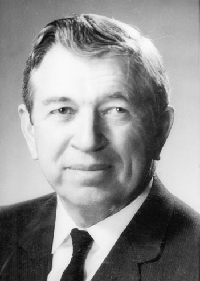 |
|
William Larkin Duren Jr. (1905-2008) (Photo source: MAA Presidents. For another photograph, see the Paul Halmos Photograph Collection.) |
 |
|
Griffith Baley Price (1905-2006) (Photo source: MAA Presidents. For another photograph, see the Paul Halmos Photograph Collection.) |
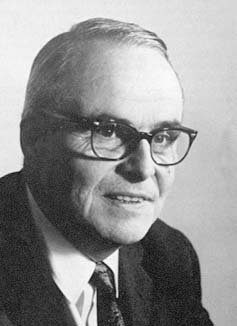 |
|
Albert William Tucker (1905-1995) (Photo source: MacTutor Archive, which has more photos of Tucker) |
Universal Mathematics
The post-1950 curricular curtain goes up in the summer of 1954, with a group of six highly respected leaders in undergraduate education, a subgroup of the newly formed Committee for the Undergraduate Program (CUP), meeting to write a two-volume work, Universal Mathematics. This group soon expanded to 14 participants, four of whom went on to become presidents of MAA: E. J. McShane (1953-54), W. L. Duren Jr. (1955-56), G. B. Price (1957-58), and A. W. Tucker (1961-62). McShane also was president of the American Mathematical Society (AMS) during 1959-60, and John Kemeny became president of Dartmouth College. Universal Mathematics was meant for a new course intended to serve all first year college students who had taken intermediate algebra and geometry in high school. The first semester covered some ideas in precalculus and in calculus. The second covered discrete topics, including sets, combinatorics, probability, algebraic systems, and applications, including some applications to the social sciences [41]. The course was not a success. William Duren, chair of the writing committee, said “The book is not yet suitable as a textbook and caused considerable difficulty to students and instructors. The main trouble is that students cannot read it . . . .” [12].
Even in its time, in a unified country flush with victory in World War II and confident of its power, the egalitarian impulse of the eminent leaders of the Universal Mathematics project was ambitious. Also breathtaking was the enthusiasm and energy expended by the talented and dedicated mathematicians working on the project. In one summer, operating with scant funding, they wrote a volume for the first semester of the course and drafted one for the second. The eagerness of the curricular leaders of those years is neatly sketched by G. Baley Price’s account of the first meeting of CUP in 1953 in which the chair, Duren, demonstrated a new tool for productivity: “He rented a suite of rooms in a hotel and he locked us up in them till our business was finished” [50, p. 4].
Enthusiasm was essential in creating Universal Mathematics because direct financial support was restricted to a small grant of $2,500 – equivalent to $21,701.12 in 2013 dollars, according to the Bureau of Labor Statistics’ inflation calculator – from the privately organized Social Science Research Council. The NSF had only just come into existence in 1950 and its budget for Education and Human Resources in the year when Universal Mathematics was written was only 1.5% (in constant dollars) of what that budget became by century’s end [47].
Bookending the 1950-2000 era at the recent end, we see a set of projects often termed “calculus reform” that offer an interesting contrast to the Universal Mathematics project. Whereas the latter was an expression of a comparatively small and eminent leadership group, operating with highly uncommon speed and enthusiasm and with meager financial support, calculus reform was different in all these respects: it was inclusive and deliberate and it enjoyed generous financial support. NSF supported 127 separate calculus reform projects, stretching from 1988 to 1997, averaging $186,458 per project, for a total of $23,680,000 for all 127 projects [15, p. 22]. It would have been impossible for the Universal Mathematics project to proceed in the way that calculus reform did; the money was not there to do it that way. It is interesting to speculate whether Universal Mathematics would have been a success if it had enjoyed the financial advantages that calculus reform had.
We return again to the Universal Mathematics project to consider its motivations. The preface of Universal Mathematics, Part I. Functions and Limits says little about why this novel curricular idea was put forward. Examining the content of the book, and reading between the lines of the preface, one can see a desire to be more modern, as in the use of Moore-Smith limits for example. But the only remark about motivation in the preface is the phrase “. . . because of widespread interest in revision of the elementary courses in mathematics…” [4]. Fortunately, project author Price was more expansive in writing elsewhere: in [50] Price included the external pressures of manpower and demographics in explaining the reasons for the project. Ever more students were coming to college but there was a serious shortage of mathematics faculty because of World War II – among other factors, due to the crimping of the pipeline of graduate students. According to Price, Universal Mathematics was meant, in part, to deal with the numbers economically. A further goal was to give the high schools targets for improvement. Finally, Price remarked, it was hoped that Universal Mathematics would get “strong research mathematicians back into contact with the elementary courses.”
In addition to the external influence from demographics and manpower matters, one can infer some external influence on Universal Mathematics from neighboring social science disciplines because significant space is given to recent applications in those disciplines in Volume 2. For more about the Universal Mathematics project, including forerunner work at the University of Chicago, see [52].
The unhappy fate of Universal Mathematics should not be taken to mean that the middle 1950s was not the right time for curricular change, or that much more money would have been essential to achieve change. As we shall point out next, service courses, such as the wildly successful Finite Mathematics – one of the first notable widespread changes in curriculum of the 1950s – provide a counterexample.
External Influences on U.S. Undergraduate Mathematics Curricula: 1950-2000 - Service Courses
Service Courses for Biology, Business, Social Sciences, and Liberal Arts
At midcentury it was not at all unusual for a mathematics department to have students of the physical sciences and engineering in its courses. But as the second half of the century proceeded, increasing numbers of students of the biological, management, and social sciences (BMSS) also required more mathematics. For example, the National Academy of Sciences (NAS) referred in 1968 to “the current explosive penetration of mathematical methods into other disciplines, amounting to a virtual ‘mathematization of culture.’” [44]. That report also asserted that “Mathematics is also becoming an essential tool in the world of government, industry and business.”
 |
|
John Kemeny and his Dartmouth College colleagues Laurie Snell and Gerald Thompson pioneered a "finite mathematics" text and course for a wide range of students, beginning during the 1950s. (Photo source: MacTutor Archive) |
|
|
|
J. Laurie Snell in about 2006. (Photo appears at the Chance website at Dartmouth College. Chance is a quantitative literacy course emphasizing probability and statistics. It was developed by a team led by Snell beginning in 1992.) |
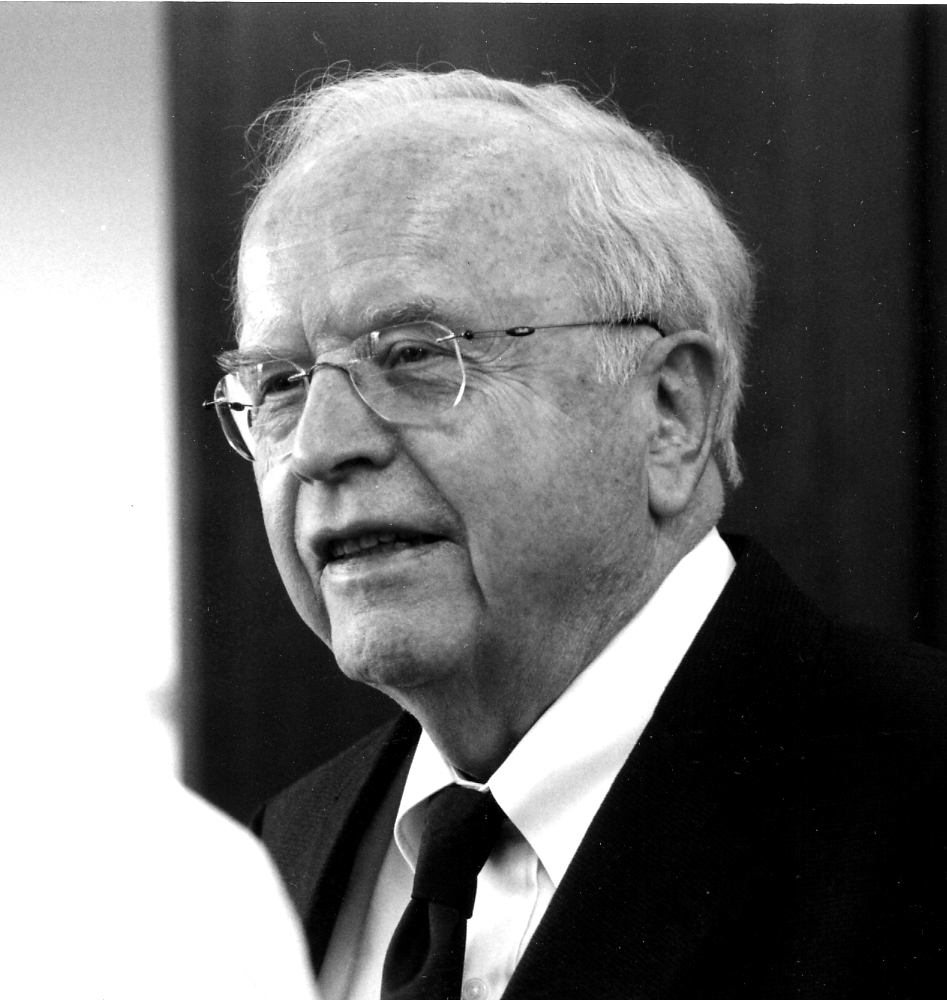 |
|
Gerald L. Thompson in about 2006 (Photo provided to the MAA by Thompson in 2006) |
In fact, by the time of this 1968 NAS report, the mathematical community was already acting on this issue. In 1956, John Kemeny (1926-1992), Laurie Snell (1925-2011), and Gerald Thompson (1923-2009) wrote Introduction to Finite Mathematics [23], intended for service courses for social science students, a category of courses that didn’t exist at the time. Interestingly, this work had no financial support or prestigious committee behind it. Before long, to the surprise of the authors, the Finite Mathematics course became a favorite of business faculty who were trying to add analytical rigor to their students’ programs. This serendipitous development had a huge effect on enrollments in the course. Data from the Conference Board of the Mathematical Sciences (CBMS) shows a rise from 1000 students enrolled nationwide in the fall term of 1960 to around 100,000 per fall term throughout most of the last decades of the 1950-2000 era.
Finite Mathematics included some internal motivation as well as the desire to serve social science students. For example, the authors were eager to write about linear programming, game theory, and aspects of graph theory, which were relatively new mathematics research developments at the time. See [41] for the detailed story of this course and the intellectual and organizational environments that gave rise to it. The second and third editions of Introduction to Finite Mathematics are available online from Dartmouth College.
Kemeny, Snell, and Thompson were well respected because of their appointments at Dartmouth, their Princeton backgrounds, and their association at Princeton with A. W. Tucker, who from 1948 onward was known for his work in optimization and game theory. But at the same time they were just three junior professors, not representing anyone’s thoughts but their own. However, by 1964, four years before the NAS report mentioned above [44], the prestigious Committee on the Undergraduate Program in Mathematics (CUPM, created by the MAA Board of Governors in 1953 as the successor to CUP [13]), speaking as a standing committee of MAA, issued a report which was forthright about the appropriateness of the very concept of service courses: “. . . special courses must be developed for biological, management and social sciences students” [31, p. 5].
Sensitivity to the needs of students in the biological, management and social sciences went beyond realizing that the mathematics that had been provided for students in mathematics and the physical sciences and engineering was not exactly what BMSS students needed. There was an additional realization that many of these students would be unable or not motivated to take as much mathematics as traditional audiences in the physical sciences. For example, CUPM, in its 1964 report on mathematics for BMSS students recommended a presentation of single variable calculus of only 39 one-hour classes [31]. This undoubtedly gave impetus to the spread of one-term courses in calculus, sometimes called Calculus for Biological, Management, and Social Sciences or Non-mainstream Calculus. Nationwide enrollment in such courses at four-year colleges rose from being too negligible for CBMS to report in the Fall of 1960 to 115,000 in the Fall of 2000.
Similarly, in 1972, a CUPM statistics panel offered suggestions for a one-semester course in statistics with no calculus prerequisite [27]. From the Cajori Two Project [40] we can see that some schools had such statistics courses well before 1950, so CUPM was putting its blessing on a movement already underway. The blessing, and other merits of the case, worked: enrollments in such courses at 4-year colleges rose from 12,000 in the Fall of 1960 to 155,000 in the Fall of 2000.
The motivations for creating and promoting these service courses surely included a genuine interest by the mathematical community in matters external to mathematics and the physical sciences. An alternative motivation, the desire to increase mathematics enrollments, was probably present but only mildly: as we have shown, the service courses discussed here had roots well before the 60% plunge in numbers of graduating mathematics majors of the 1970s.
External Influences on U.S. Undergraduate Mathematics Curricula: 1950-2000 - Applications and Modeling Courses
Applications and Modeling Courses
 |
|
Above, Solomon Garfunkel, founder of COMAP and co-author, with Lynn Steen, of For All Practical Purposes, in 2013 (Photo provided to MAA by Sol Garfunkel in 2013) Below, Walter Meyer, co-author with Joseph Malkevitch of Graphs, Models and Finite Mathematics, leader of the Cajori Two Project, and author of the present article, in 2013 (Photo provided to MAA by Walter Meyer in 2013) |
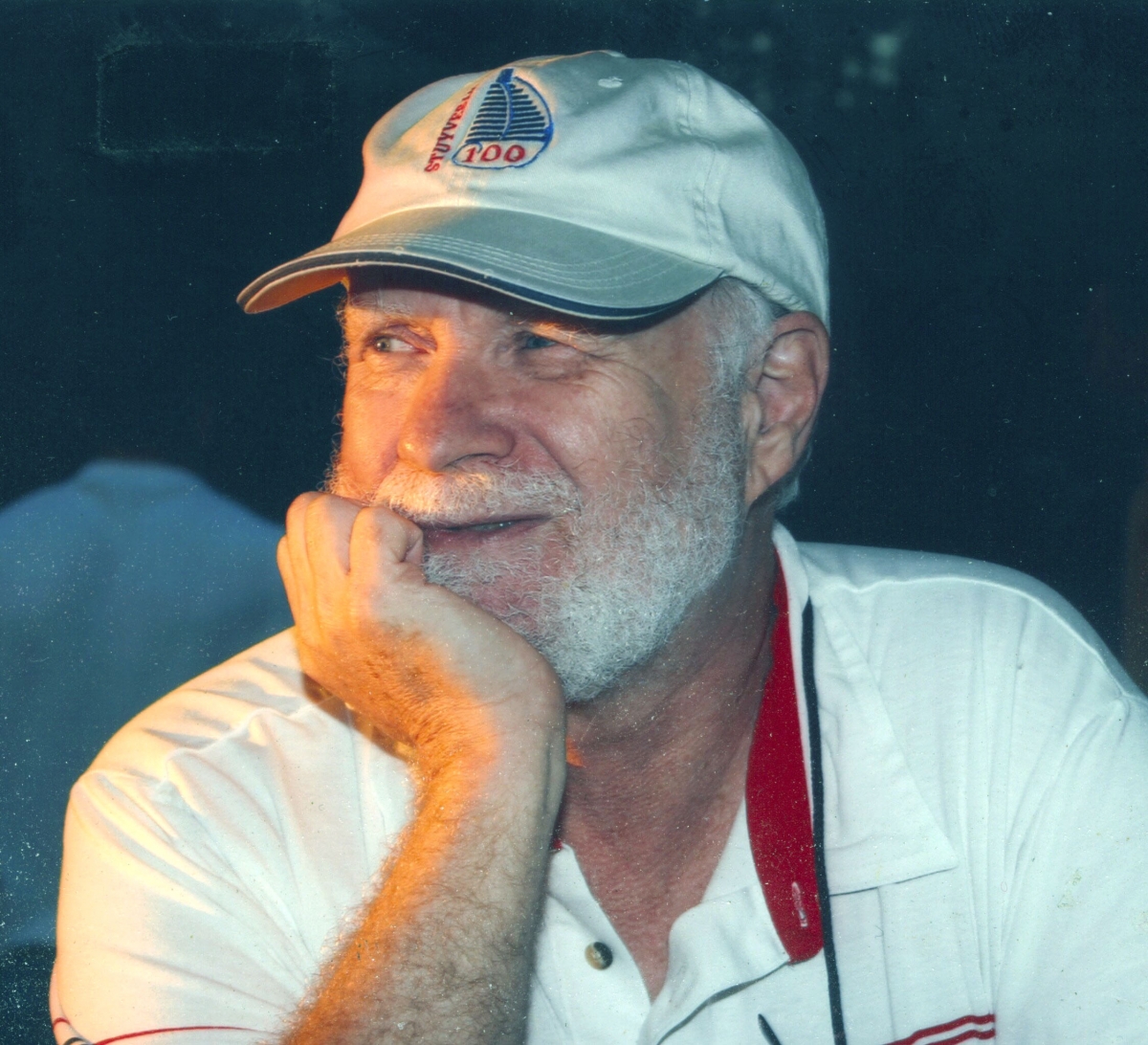 |
The ultimate form in which the mathematical world can engage with the external world is to solve its problems and to teach students to do so as well. Although applied undergraduate mathematics courses were common in the late 19th century, by the middle of the 20th century there was considerably less emphasis on applications [43]. CUPM was not happy with this disregard of the external world. Between 1962 and 1972, CUPM issued seven reports [29, 30, 32-36] that recommended a change in this situation in the form of upper division modeling courses, courses where real-world problems would be confronted with what might be a varied set of mathematical tools. Despite the prestige of CUPM and the respected leaders who sat on it, the community was slow to respond to the calls issued as early as 1962. The first example we know of a modeling course in the upper division category was a course offered at Middlebury College by Michael Olinick in 1971. Also noteworthy was the Mathematics Clinic at Harvey Mudd College, starting up in 1973, but with roots in a seminar running in 1970-72. Maynard Thompson and Daniel Maki published an early influential modeling text in 1973 [27]. Finally, Henry Pollak, in “A History of the teaching of modeling” in [49], discussed possible influences from mathematical modeling clinics in England.
Applications outside upper division modeling courses
By Fall 2000, upper division mathematical modeling course enrollments had reached about 2000 students. Considering that the number of graduating mathematics majors in that era was about seven times as large, it does not seem as if upper division modeling courses were a big success. But the influence of the greater interest in applications went beyond upper division courses in modeling to include calculus reform, lower division courses in modeling, and lectures and discussions at professional meetings.
In the wake of upper division modeling courses, lower division modeling courses aimed at those not majoring in any of the sciences also arrived. Pioneers here were the COMAP volume For All Practical Purposes [16] and its forerunner Graphs, Models and Finite Mathematics [28]. These texts indicated a major new direction for “liberal arts math.” By Fall 2000, there were about 14,000 students enrolled in lower division mathematical modeling courses.
The temper of the times in our discipline is found not only in our courses. One can see it in professional mathematics meetings. Consider the programs of the 2007 and 2008 MathFest meeting of MAA. We attended and analyzed all invited hour addresses at these meetings with the intention of counting those that were mainly pure mathematics and those that were mainly applied mathematics. Our classification depended greatly on the speaker’s presentation of the motivation for the work, not merely whether some use could be made of it in the end. Some talks were hard to classify for one reason or another: some seemed irrelevant to the issue (e.g., the Leitzel lectures which concerned how mathematicians ought to behave and organize themselves, talks on history or pedagogy); some dealt with recreational mathematics, raising the question whether mathematics used for paper folding and other recreations really is applied mathematics; and two were hard to classify since they touched on pure and applied mathematics rather evenly. Table 1 shows how we classified the talks.
|
MAA MathFest Invited Addresses: Pure vs. Applied |
2007 |
2008 |
|
# Mostly pure |
2 |
1 |
|
# Mostly applied |
6 |
3 |
|
# Recreational but with no other evident applications |
1 |
4 |
|
# Pure and applied somewhat evenly |
1 (Hedrick #3) |
1 (Hedrick #2) |
|
# Other (history, organizational, pedagogical) |
3 |
2 |
|
# Total |
13 |
11 |
Table 1. Invited Hour Addresses at Mathfest 2007 and 2008
Clearly, applied mathematics was emphasized more than pure mathematics, and even more so if applying mathematics to recreations is considered applied mathematics.
Another example of how pervasive advocacy of applications became is the frequency with which applications were cited as a main objective of calculus reform. This will be discussed more fully later.
Influences leading to modeling and applications
Wanting to teach applications from a variety of other disciplines – especially in the high-profile form of a modeling course – is, to begin with, an example of interest in the world outside mathematics. But why did this interest in other disciplines not manifest itself in modeling courses earlier, say in 1920? The simple fact is that for much of the 20th century, if not before, there has been enough mathematics and enough applications to have made modeling courses with varied topics, including some outside the physical sciences, possible.
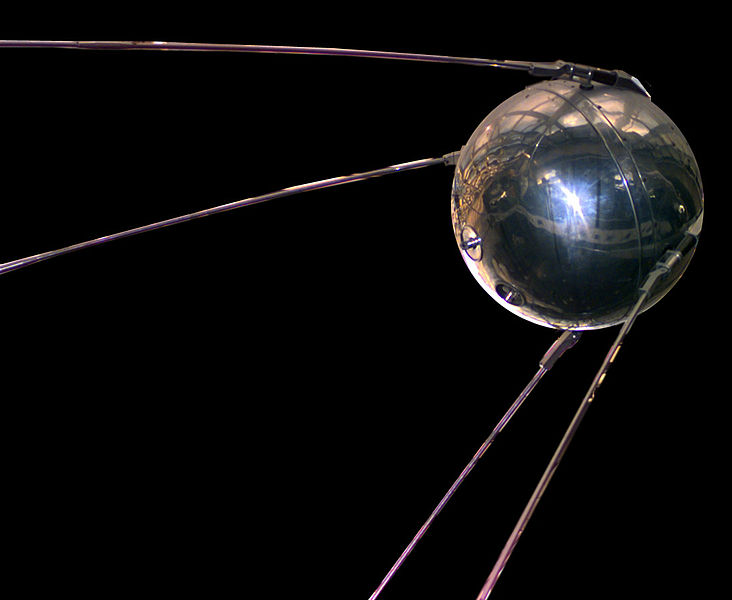 |
|
Model of Sputnik 1, launched into space by the Soviet Union in 1957, National Air and Space Museum, Washington, D.C., U.S.A. (Photo source: NASA via Wikimedia Commons) |
One might suppose that the 1957 launching of Sputnik, the world’s first space satellite, by the Soviet Union would have been influential in unleashing interest in applications and modeling in the U.S. However, the two notable “applied” textbooks closest in time after Sputnik, Ben Noble’s 1966 Applied Linear Algebra and Garrett Birkhoff’s and Thomas Bartee’s Modern Applied Algebra, do not seem to have been influenced by Sputnik. These are not modeling textbooks, but according to WorldCat, they were the first two books in the 20th century to use the words “algebra” and “applied” (or a similar word) together in their titles. Although Birkhoff’s and Bartee’s text may not be suitable for undergraduates, it was followed by other undergraduate level applied algebra books which were, and it was surely a stimulus for these other authors. Nowadays one can find undergraduate courses with the title “Applied Algebra” (or similar) at diverse institutions, such as Harvard University, Saginaw Valley State University, University of Wyoming, Prescott College, and SUNY at Stony Brook. Noble’s book was conceived as an undergraduate text, as its preface makes clear, and, according to a later co-author, James Daniel, was definitely used for undergraduates as intended [9]. For more about the evolution of linear algebra, see [42].
Although there is no doubt that the Sputnik launch spurred an intense effort by the U.S. to catch up with and surpass Soviet space technology, we have had considerable interaction with authors Noble and with Bartee by email, phone, and letter and Sputnik never came up. Noble’s interest in applied linear algebra dates to his difficulty grasping an abstract linear algebra course he took as part of his graduate work at Cambridge University in 1946 and is well-described in the preface of [48]. Bartee’s interest in applications dates from the late 1940s when he worked on defense-related issues at the Firestone Corporation. There is no doubt that Sputnik had a huge influence on science and mathematics generally, raising levels of interest and funding, but we have seen no definite evidence of any specific immediate stimulus to applied mathematics in undergraduate teaching. However, it may well have contributed to a cumulative impact along with CUPM reports and other factors that were not, by themselves, immediately decisive.
The quantum leaps in mathematics represented by linear programming, applied combinatorics, and graph theory occurred decades before modeling courses arose to include them, so they also cannot be regarded as immediate causes of the development of modeling courses. Therefore, it is reasonable to hunt even further for the crucial spark that ignited the aforementioned accumulated pressures and brought modeling courses into existence. In [43] we argued that the following aspects of our environment in the 1970s and 1980s may have turned mathematics educators toward the uses of mathematics: difficulties new Ph.D.’s had in getting jobs; enrollment declines of mathematics majors, leading many to want more directly useful curricula; and the heady winds of experiment and change that were blowing through American society, and in particular the educational sector, during the late 1960s and the 1970s.
External Influences on U.S. Undergraduate Mathematics Curricula: 1950-2000 - Discrete Mathematics
Discrete Mathematics
In a nutshell, the story of the Discrete Mathematics course is that the computer science community devised and promoted this course, asked the mathematical community to teach it, and the mathematical community did so – a clear case of openness to the world outside mathematics.
The computer science community had decided as early as 1968 that its majors should study a discrete mathematics course [1]. Corresponding interest in such a course in the mathematical community was, around this time, only flickering to life. One notable example was a Discrete Mathematics course at Swarthmore pioneered by Eugene Klotz in 1970-71, soon to be joined by Steve Maurer. But CBMS figures show only about 1000 enrollments in such a course in 1970 in the union of mathematics, computer science, statistics, operations research, and other mathematical science departments. Most of these courses were taught in computer science departments according to Anthony Ralston, a mathematics Ph.D. who was also prominent in the computer science world as chair of computer science at the State University of New York at Buffalo [53].
In order to confirm how interest in this course was distributed between computer science and mathematics departments, we examined, with the help of WorldCat, all English language books with “Discrete Mathematics” or “Discrete Structures” in their titles published between 1973, when the first such book appeared, and 1988. Some of these books are probably too advanced for undergraduate use at many universities, but it is unlikely that this search missed any significant number of undergraduate texts usable for a Discrete Mathematics course.
Our search turned up 42 books that had at least one author working at an American institution. Until 1984, at most two authors were people whose professional activities were mainly in a mathematics department or research lab. All the rest were working in computer science environments. We determined the loci of professional activity partly from examining the frontmatter of the textbooks mentioned above, partly from email contacts with the authors, and partly from our personal knowledge of some of the authors. Starting in 1984, mathematical authors began to predominate.
Although computer scientists can be said to have invented this course through their early curriculum recommendations and textbooks, in time they became increasingly interested in leaving the teaching of it to mathematics departments [36]. Ralston was the ambassador who, more than anyone else, furthered this transfer of duties. In a series of workshops, talks, articles and committee activity around 1980, he urged mathematics departments to create discrete mathematics courses [52]. As noted above, a few years after Ralston’s burst of advocacy, discrete mathematics books written by mathematical authors began to appear. And by the Fall of 2000, enrollments in discrete mathematics courses in mathematics departments reached approximately 31,000 according to CBMS.
If one wishes to trace the influences on the Discrete Mathematics course back to before the creation of the academic computer science community, one might ask why that community exists in the first place. The reason, obviously, lies in the existence and explosive development of computers, which in turn depended on work in mathematics, but also on contributions from electrical engineers and intense encouragement from commercial and military circles.
External Influences on U.S. Undergraduate Mathematics Curricula: 1950-2000 - Calculus Reform
Calculus Reform
Some advocates of discrete mathematics became fairly explicit that calculus needed to be nudged a bit to make room for discrete ideas in the lower division mathematics curriculum. For example, Ralston urged inclusion of discrete mathematics in a public debate with Ronald Douglas, a proponent of the primacy of calculus [54, p. 11]. More provocatively, the Williamstown Conference of 1982 included the paper “How to Cure the Plague of Calculus” [51]. The desire for more discrete mathematics seems to be a durable theme: in 2007, years after the Williamstown Conference, one finds it expressed in Bressoud’s Launchings column of November 2007 on the MAA website [5].
|
|
|
This photograph of Ronald G. Douglas, early advocate of calculus reform, was taken by Paul Halmos in 1966, when the two were colleagues at the University of Michigan. It appears in the Paul Halmos Photograph Collection here in Convergence. |
 |
|
Ron Douglas at a workshop on Hilbert Modules and Complex Geometry at the Oberwolfach Conference Center in Germany in 2009. (Photo by Renate Schmid from the Oberwolfach Photograph Collection (MFO) is used under the terms of Creative Commons License Attribution-Share Alike 2.0 Germany.) |
By 1986, advocates for calculus started to formulate a program of improvement for calculus at the Tulane Conference [11]. But it is a mistake to view the Tulane Conference and the subsequent calculus reform movement as entirely a defensive response to insurgent discrete mathematics enthusiasts. Calculus had been an ongoing target of curricular change in the second half of the 20th century as can be seen in the excellent background notes in [54]. For the earlier history of calculus teaching see [53]. Calculus reform became perhaps the most widely pursued curricular initiative of the 1950-2000 era, ultimately producing numerous reports, textbooks, meetings and conference sessions, and involving at least 127 NSF projects. In 2001 it was estimated by Susan L. Ganter that “More than 500 mathematics departments at postsecondary institutions nationwide are currently implementing some level of calculus reform” [15].
As for what brought about calculus reform, one thing seems indisputable: it was not weak enrollments. In the Fall of 1985, around the time calculus reform started up, the number of students in mainstream calculus was, according to CBMS, 2.54 times the number in all forms of calculus in the Fall of 1960. This ratio accords well with the increase in the number of students in college from 1960 to 1985. For a comprehensive discussion of conditions and attitudes leading to calculus reform, see [54, pp. 7-22]. Of the factors mentioned there, we repeat the following which have external origins: NSF funding; changing national needs in regard to economic competitiveness; technology; a “more diverse, less selective spectrum of students coming to college”; and declines (of largely mysterious origins) in the number of mathematics majors, leading to more concern for average students. No concrete evidence was given for these allegedly causative factors, but the authors rendering these judgments were highly respected and very well positioned leaders in the mathematical community, so their judgments are surely more reliable than most armchair speculations.
Not much mentioned in [54] as an animating concern of calculus reform, perhaps because good data was not then available, was the desire to give a larger role to modeling and applications. In thinking about this issue of identifying the “real” motivations of calculus reform (or any large scale project), it is worthwhile to consider that those involved may not all have had exactly the same ideas and that ideas may change over time. As an example, Douglas, the prime initiator of calculus reform, did not mention applications in his lead essay for the Tulane Conference [11]. However, the content workshop of that conference, a group of eight mathematicians, did mention it as a goal, on a par with Douglas’ two main goals of using technology and increasing conceptual depth [11]. Likewise, one can see applications in a prominent role in the implementation projects for calculus reform, which followed the conference by about two years. According to [15], showing applications of calculus was the second most commonly mentioned goal in the 127 calculus reform projects supported by NSF between 1988 and 1994, appearing as one of the goals in 73% of the proposals. It appeared in more proposals than enhancing conceptual understanding, or using multiple representations, or trying new pedagogical approaches such as discovery learning, etc. Only “use of technology” was more frequently mentioned as a project goal. Another evidence of the importance of applications in calculus reform can be seen in a survey of a random selection of 62 colleges trying out calculus reform in the mid 1990s: Table 8 of [54] shows that incorporating applications was a more important goal than any other except for using technology.
External Influences on U.S. Undergraduate Mathematics Curricula: 1950-2000 - Pedagogy
Pedagogy: Cooperative Learning, IBL, Technology, and More
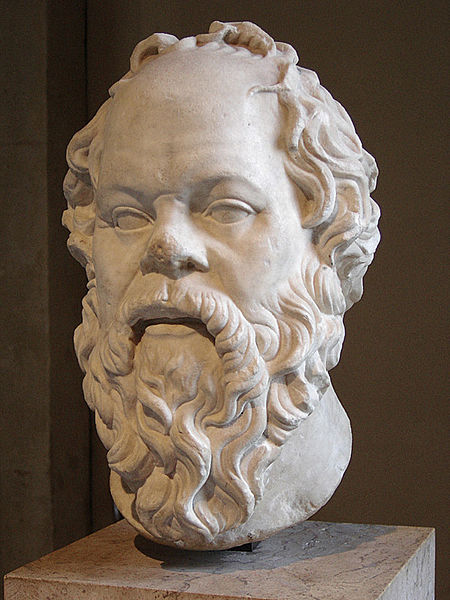 |
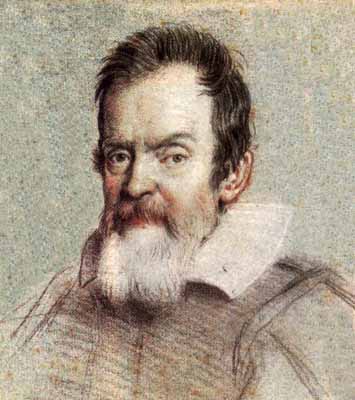 |
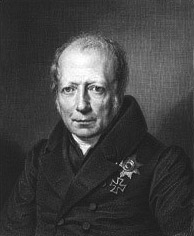 |
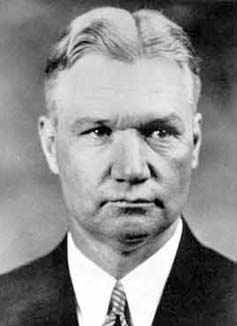 |
|
Early advocates of inquiry-based learning, top to bottom: Socrates (469-399 BCE), Galileo Galilei (1564-1642), Wilhelm von Humboldt (1767-1835), and Robert Lee (R.L.) Moore (1882-1974). (Photo sources: The Louvre via Wikimedia Commons, MacTutor Archive, Humboldt-Universität zu Berlin via Wikimedia Commons, MacTutor Archive, respectively.) |
At the end of our half-century (1950-2000), there was increasing interest in different ways of teaching. We shall argue that this partly reflected external forces. One can see this increased interest in one of Bressoud’s Launchings columns [7] where he reported on a 2011 MAA survey, Characteristics of Successful Programs in College Calculus, and noted that only 64% of those instructors surveyed agreed with the statement “Calculus students learn best from lectures, provided they are clear and well-prepared.” Fully 16% rejected that assertion with the remaining 20% evidently on the fence, or with some hair to split. In addition, various forms of technology were in use. For example 61% required students to use graphing calculators for out-of-class assignments. This survey took place a few years after the era we are writing about, but the attitudes reported surely did not develop overnight. We shall shortly present some data not handicapped by being outside the era.
In addition to reporting this data on attitudes toward teaching methods, Bressoud, a former president of MAA, has been outspoken in advocating alternatives to the lecture method [8]. One of the pedagogies arousing interest in the 1950-2000 era was cooperative learning, in which students work together in groups. According to [10], this teaching method scarcely existed in our colleges until the late 1960s. But by 1995, MAA found sufficient interest in it that it formed Project CLUME (Cooperative Learning in Undergraduate Mathematics) to provide information to faculty who wanted to try cooperative learning. In addition, MAA published a Mathematical Notes volume [10] on the topic.
Another style of pedagogy that has aroused interest is Inquiry-Based Learning (IBL), in which the student is treated as an investigator or inventor rather than a recipient of mathematical ideas. IBL made what was probably its most dramatic early appearance in mathematics teaching in the work of R. L. Moore (1882-1974), especially with graduate students. But imitation of Moore’s methods for undergraduates was slow to follow and we have no evidence of it before 1950. However, by 2007 advocates of various forms of IBL were able to found an on-line journal, The Journal of Inquiry-Based Learning in Mathematics.
Finally, toward the end of the 1950-2000 era there was a flood – no other word will do – of experimentation in using technology in mathematics instruction: clickers, calculators, various software packages, often combined with cooperative learning or inquiry-based learning. For a masterful survey of these technologies, as well as other tools used in mathematics teaching during the last two centuries, the reader should consult Tools of American Mathematics Teaching, 1800-2000, by Peggy Kidwell, David L. Roberts, and Amy-Ackerberg Hastings [24]. Through no fault of the authors, this excellent work focuses mostly on the variety of tools available rather than on actual usage in the classroom – data on usage of technology is hard to come by for the decades just before 2000.
To fill in some of the story on actual experimentation with alternative pedagogies before 2000, we did an analysis of NSF’s online database of the projects it has funded [45]. The database is incomplete for projects with starting dates before 1/1/1985, so we examined it for projects in the Division of Undergraduate Education (DUE) whose starting dates were in the range 1/1/1985 to 12/31/1999.
We entered a long search string containing titles of all courses found in Table A1 and the first 5 entries of Table A2 of the 1995 survey of the CBMS [26]. This list contains all undergraduate mathematics courses whose nationwide enrollment in 1995 is estimated to be at least 1000 by CBMS. Variants of titles were added to overcome the literalism of search technology. (For example, we added "Theory of Numbers" to augment the CBMS title “Number Theory” and we added “Elementary Functions” to augment “Precalculus”.) Our search string was a disjunction of 77 terms and returned 1021 NSF projects. We took a random sample of 100 of the projects and we read the abstracts and other available data for all 100. Of these, 70 projects had at least one principal investigator in a mathematics department. Each of these projects was examined to discern whether a distinctive form of pedagogy was an objective of the project (in addition, perhaps, to other objectives). We found that 62 of the 70 projects had some kind of distinctive pedagogical goal and, of these, 57 projects investigated a form of pedagogy in which technology played a part.
We do not believe that the American interest in alternative pedagogies, which grew substantially after 1950, can be attributed totally to factors within American mathematics. For one thing, the external factor of technology was clearly influential. But we believe that, at least for inquiry-based learning, some hard-to-identify factors concerning the broad social and intellectual climate were also involved.
One argument for such external factors is based on the observation that inquiry-based learning experienced an upsurge in many other fields and many other developed countries in the era from 1950 to 2000. For a review of recent implementations in many subjects throughout the English-speaking world, see Healey and Jenkins [20]. For a description of the 1960s upsurge in problem-based mathematics learning in Russia, see Karp and Vogeli [21]. It would be scientifically odd to explain the widespread increased interest in inquiry-based learning entirely by separate internal intellectual forces in the separate fields and countries. Likewise, we think it unlikely that interest in inquiry-based learning developed in mathematics for internal reasons and other fields simply copied this learning style from mathematics. The most likely hypothesis is that changes in the common intellectual and social climates of many diverse societies and academic communities were creating a convergence that influenced many toward trying inquiry-based pedagogy in the era from 1950 to 2000.
Another argument for factors outside of mathematics promoting inquiry-based learning is based on the long history of this teaching method. One can find it in the Socratic dialogues, in Galileo's writings, and in the ideas of Wilhelm von Humboldt in Germany in the early 19th century. In 1810, von Humboldt, describing the future University of Berlin, said [14]:
[U]niversities should treat learning as not yet wholly solved problems and hence always in research mode.
These examples could have inspired widespread emulation in undergraduate mathematics in the United States well before the 20th century, far beyond the remarkable but initially isolated example of R. L. Moore. But circumstances evidently needed to change first. Might those changes in circumstances have been internal to the mathematical community? It is hard to think of plausible mathematical candidates. By contrast, it is easy to think of external circumstances that might plausibly have played a role: matters such as increasing affluence, different practices in child-raising, the proliferation of electronic forms of entertainment, a larger percentage of the population attending college, the content and amount of research and advocacy emanating from schools of education and teacher’s colleges, periodicals such as the Journal for Research in Mathematics Education, etc. We cannot prove links to any of these factors, but judgment seems to argue that some were probably involved.
External Influences on U.S. Undergraduate Mathematics Curricula: 1950-2000 - Conclusion - References
Conclusion
We have presented data to show that many important curricular experiments and changes in United States undergraduate mathematics between 1950 and 2000 were at least partly inspired by influences external to mathematics. Perhaps this is the customary case for any era and any part of the world. Or might this era be distinctive in that a reaction to modernism was underway? We are not aware of other studies that would shed light on these questions and we look forward to additional contributions to this question. In particular, the Cajori Two Project data [40] may shed light on the first half of the 20th century in America.
References
1. ACM curriculum committee on computer science, Curriculum 68: Recommendations for academic programs in computer science, Communications of the ACM, 11, Issue 3 (March 1968), 151-197.
2. G. Birkhoff and T. C. Bartee, Modern Applied Algebra, McGraw-Hill, New York, 1967.
3. G. Birkhoff and S. Mac Lane, A Survey of Modern Algebra, Macmillian, New York, 1941.
4. F. A. I. Bowers, Universal Mathematics: Part 1: Functions and Limits, University of Kansas, Student Union Bookstore, Lawrence, Kansas, 1954.
5. D. Bressoud, Rethinking the First Year, in Launchings, Nov. 2007, MAA, 2012,
http://www.maa.org/external_archive/columns/launchings/launchings_11_07.html
6. D. Bressoud, Various titles in 2010 in Launchings, MAA, 2012,
http://www.maa.org/columns/launchings/launchings.html
7. D. Bressoud, The Calculus I Instructor, in Launchings, June 2011, MAA, 2012,
http://www.maa.org/external_archive/columns/launchings/launchings_06_11.html
[Editor: See Bressoud’s continued discussion of high school and college calculus instruction in Launchings, http://launchings.blogspot.com/.]
8. D. Bressoud, The Best Way to Learn, in Launchings, Aug. 2011, MAA, 2012,
http://launchings.blogspot.com/search?updated-min=2011-01-01T00:00:00-05:00&updated-max=2012-01-01T00:00:00-05:00&max-results=5
9. J. Daniel, email to the author, February 18, 2012.
10. N. Davidson, Small group learning and teaching in mathematics: A selective review of the research, in Dubinsky, Mathews and Reynolds, Readings in Cooperative Learning for Undergraduate Mathematics, MAA Notes #44, MAA, Washington, 1997.
11. R. G. Douglas, Toward a Lean and Lively Calculus, MAA Notes #6, MAA, Washington, 1986.
12. W. L. Duren, Tulane Experience with Universal Mathematics, Part I, The American Mathematical Monthly, 63, no. 9 (1956), 23-37.
13. W. L. Duren, CUPM, The history of an idea, American Mathematical Monthly, 74 (1967), 23-37.
14. L. Elton, Scholarship and the research and teaching nexus, in Barnett, R. (ed.), Reshaping the university: new relationships between research, scholarship and teaching. Maidenhead: McGraw-Hill/Open University Press, 2005, 108–18.
15. S. L. Ganter, Changing Calculus: A Report on Evaluation Efforts and National Impact From 1988 to 1998, MAA Notes #56, MAA, Washington, 2001.
16. S. Garfunkel and L. Steen, For All Practical Purposes: Introduction to Contemporary Mathematics, W.H. Freeman, New York, 1987.
17. S. Goldberg, Introduction to Difference Equations, with Illustrative Examples from Economics, Psychology, and Sociology, Wiley, 1958; reprinted Dover, 1986.
18. J. Gray, Plato's Ghost: The Modernist Transformation of Mathematics, Princeton University Press, Princeton, N. J., 2009.
19. P. R. Halmos, Finite-dimensional Vector Spaces, Princeton University Press, Princeton, N. J., 1942.
20. M. Healey and Alan Jenkins, Developing undergraduate research and inquiry, a report of the Higher Education Academy, 2009
21. A. Karp and B. Vogeli, Russian Mathematics Education, World Scientific, 2011.
22. J. G. Kemeny, L. Snell, Mathematical Models in the Social Sciences, MIT Press, Cambridge, Mass., 1962.
23. J. G. Kemeny, L. Snell, and G. L. Thompson, Introduction to Finite Mathematics, Prentice-Hall, Englewood Cliffs, N. J., 1956.
24. P. Kidwell, D. L. Roberts, and A. Ackerberg-Hastings, Tools of American Mathematics Teaching, 1800-2000, The Johns Hopkins University Press, Baltimore, 2008.
25. M. Kline, The ancients versus the moderns: A new battle of the books, Mathematics Teacher, 51 (1958), 420.
26. D. O. Loftsgaarden, D. C. Rung, and A. E. Watkins, Statistical Abstract of Undergraduate Programs in the Mathematical Sciences in the United States (Fall 1995 CBMS Survey), MAA, Washington, 1997.
27. D. Maki and M. Thompson, Mathematical Models and Applications, Prentice-Hall, Englewood Cliffs, NJ, 1973.
28. J. Malkevitch and W. Meyer, Graphs, Models and Finite Mathematics, Prentice-Hall, Englewood Cliffs, NJ, 1974.
29. Mathematical Association of America, Committee on the Undergraduate Program in Mathematics, Preliminary Recommendations for an Honors Program in Mathematics, MAA, Washington, 1962.
30. Mathematical Association of America, Committee on the Undergraduate Program in Mathematics, Pregraduate preparation of research mathematicians, in A Compendium of CUPM Recommendations, Studies, Discussions and Recommendations, MAA, Washington, 1963, 369-446.
31. Mathematical Association of America, Committee on the Undergraduate Program in Mathematics (CUPM), Tentative Recommendations for the Undergraduate Mathematics Program of Students in the Biological, Management and Socal Sciences, MAA, Washington, 1964.
32. Mathematical Association of America, Committee on the Undergraduate Program in Mathematics, Preparation for graduate study in mathematics, in A Compendium of CUPM Recommendations Studies, Discussions and Recommendations, MAA, Washington, 1965, 447-457.
33. Mathematical Association of America, Committee on the Undergraduate Program in Mathematics, A General Curriculum in Mathematics for Colleges; a Report, MAA, Washington, 1965.
34. Mathematical Association of America, Committee on the Undergraduate Program in Mathematics, A Curriculum in Applied Mathematics, MAA, Washington, 1966.
35. Mathematical Association of America, Committee on the Undergraduate Program in Mathematics, Commentary on A General Curriculum in Mathematics for Colleges, in A Compendium of CUPM Recommendations, Studies, Discussions and Recommendations, MAA, Washington, 1972, 33-97.
36. Mathematical Association of America, Committee on the Undergraduate Program in Mathematics, Applied mathematics in the undergraduate curriculum: report of the panel on applied mathematics, in A Compendium of CUPM Recommendations, Studies, Discussions and Recommendations, MAA, Washington, 1972, 705-756.
37. Mathematical Association of America, Committee on the Undergraduate Program in Mathematics, Introductory statistics without calculus, in Mathematical Association of America, A Compendium of CUPM Recommendations, Studies, Discussions and Recommendations, MAA, Washington, 1972, 472-525.
38. Mathematical Association of America, Committee on the Undergraduate Program in Mathematics, Recommendations for a General Mathematical Sciences Program, Mathematical Association of America, Washington, 1981.
39. Mathematical Association of America, Committee on the Undergraduate Program in Mathematics, The undergraduate major in mathematical sciences, in Heeding the Call For Change, Mathematical Association of America, MAA Notes #22, MAA, Washington, 1992, 227-247.
40. W. Meyer, J. Malkevitch, J. Winn, et al, The Cajori Two Project, August 5, 2013,
http://matcmp.ncc.edu/taormij/cajori_two/search_results.php
41. W. Meyer, The origins of finite mathematics: the social science connection, The College Mathematics Journal, 38, no. 2 (March 2007), 106-118.
42. W. Meyer, Walter Meyer’s Website, https://sites.google.com/site/walterjosephmeyer/home
43. W. Meyer, The return of applications in the undergraduate curriculum, in The Joe Malkevitch Festschrift, COMAP, Bedford, MA, 2008, 85-97.
44. National Academy of Sciences, The mathematical sciences: a report, Publication #1681, Washington D. C., 1968.
45. National Science Foundation – Awards Search, July 3, 2008, http://www.nsf.gov/awardsearch/index.jsp
46. National Science Foundation – NSF at a Glance, April 7, 2010, http://www.nsf.gov/about/glance.jsp
47. National Science Foundation, NSF By Account, April 16, 2012, http://dellweb.bfa.nsf.gov/NSFHist.htm
48. B. Noble, Applied Linear Algebra, Prentice-Hall, Englewood Cliffs, NJ, 1966.
49. H. O. Pollak, A history of the teaching of modeling, Chapter 16 in A History of School Mathematics, G.M.A. Stanic and J. Kilpatrick, editors, National Council of Teachers of Mathematics, 2003, 647 - 671.
50. G. B. Price, A universal course in mathematics, A Summer Institute for Teachers of Collegiate Mathematics, Oklahoma Agricultural and Mechanical College, 1955.
51. A. Ralston and G. Young, The Future of College Mathematics, Springer-Verlag, New York, 1983.
52. A. Ralston, Computer science, mathematics and the undergraduate curriculum in both, The American Mathematical Monthly, 88, no. 7 (1981), 472-485.
53. A. Ralston, email, Sept. 11, 2006.
52. D. L. Roberts, Universal mathematics: efforts to revitalize American undergraduate mathematics instruction in the early cold war period, unpublished paper delivered at the Conference on the History of Undergraduate Mathematics in America at the United States Military Academy, June 22, 2001; manuscript available from the author.
53. G. M. Rosenstein, American calculus textbooks of the nineteenth century, in R. A. Askey, H. M. Edwards, U. C. Merzbach (eds.), A Century of Mathematics in America, vol. 3, AMS, Providence, RI, 1989, 77-109.
54. A. C. Tucker and J. R. C. Leitzel, Assessing Calculus Reform Efforts, MAA, Washington, 1995, 1-22.

